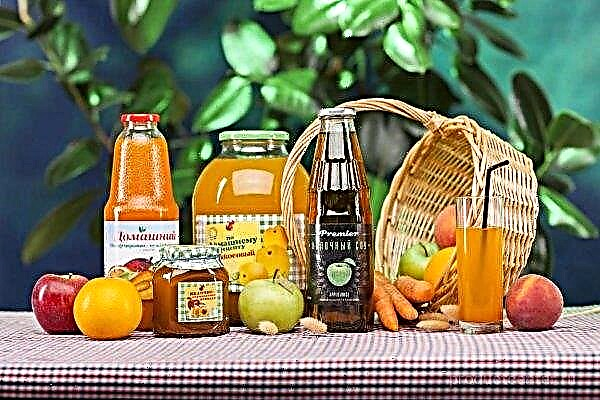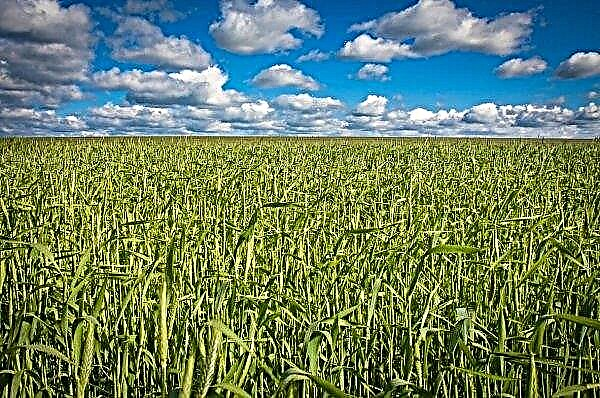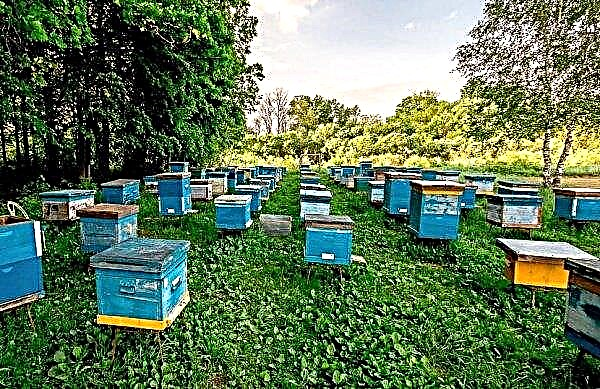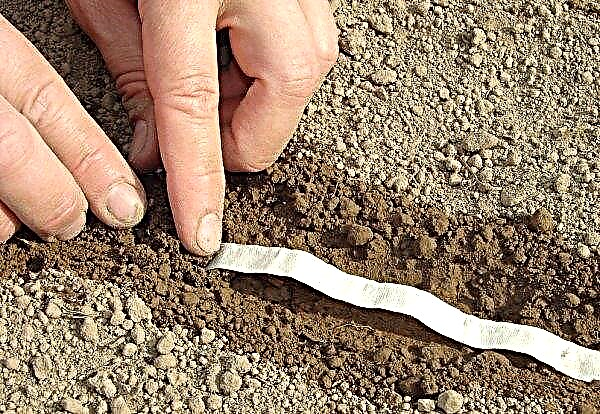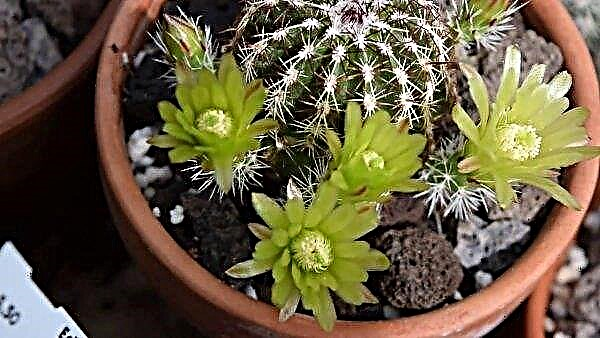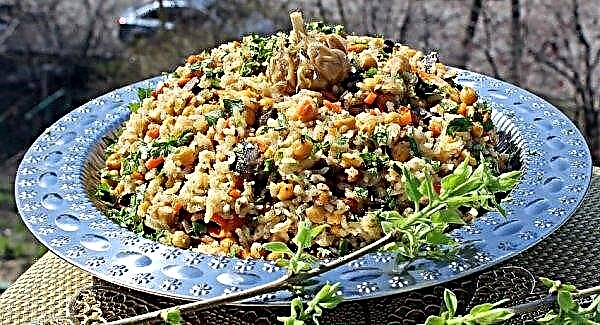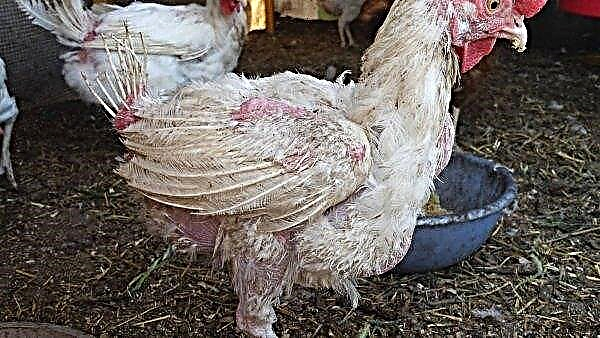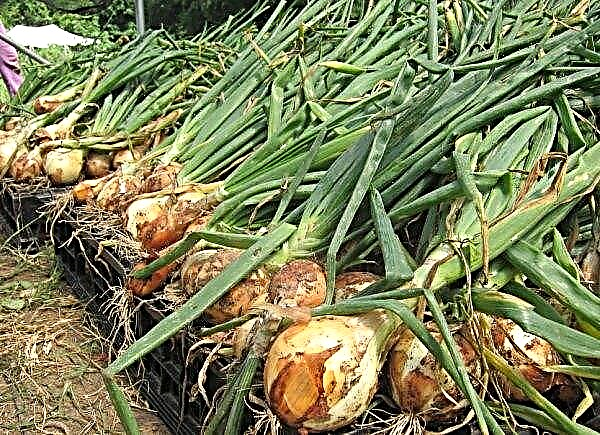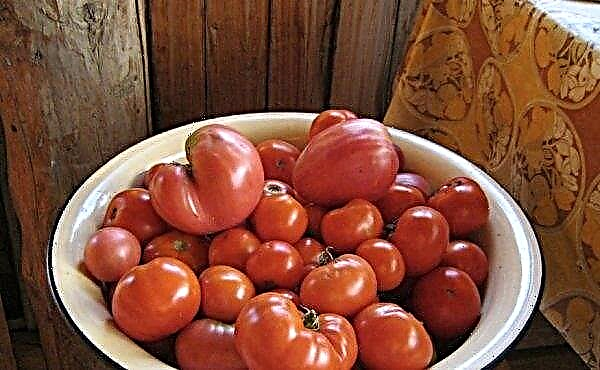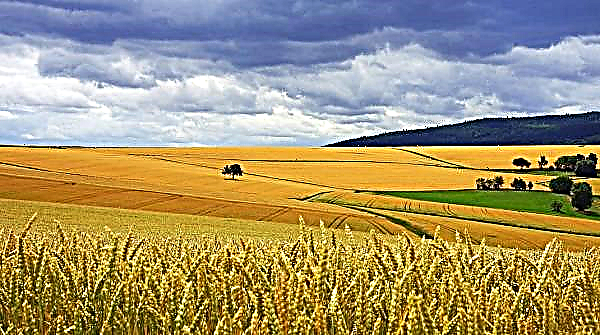There are many breeds of chickens in the world. Some relate to meat, others to egg, and others to combined. One of the types of agricultural birds of the egg direction are hens of the breed Borkovskaya.
History reference
A very rare and little-known breed of Borkovskaya was bred in Ukraine in the village of Borki, Kharkov region in 2005. The breed was bred taking into account the fact that the birds will adapt well to any climatic conditions.
The breed can be considered hybrid, because its genetic material was crossed with the Italian breed Leggorn. A big plus of Borkovskaya Barvistaya is high egg production. In the village where the Borkovsky breed was bred, other breeds of hens, such as Hercules and Poltava, are also bred.
Did you know? Borkovskaya color also has a name «barbarian» from the Ukrainian word barva.
Breed description
The feather color of the Borkovsky breed significantly distinguishes them from other types of chickens with its brightness and catchiness. The color of this species can be different: silvery, sometimes with spaces of black plumage, the chest most often has a light white tint. But in general, in a wide range of colors, they have not gone far from their relatives.
Many poultry farmers breed this breed because of its high egg production, good adaptation to the new environment, as well as tasty and healthy meat.Appearance
The appearance of the chicken is very original and appreciated in the agricultural market.
The table details the external indicators of the chicken:
| Appearance | Borkovskie colored have a spectacular appearance, strong physique. Chickens have a wide range of coloring and an amazing lying comb. |
| Head | Small, medium sized. It has red earlobes, red, sometimes pink, earrings. The chicken's face has a pronounced red tint. Little brown eyes. |
| Crest | Large, leafy. It has five to seven teeth. In females, the crest is slightly sloping to one side. Color - pink or red. |
| Beak | Bent. Yellow gray color. |
| Neck | Medium size. Fluffy. |
| Chest | V-shaped, planted down, which means high productivity in the production of chicken eggs. |
| Stomach | Tightened, rounded. |
| Wings | Medium size. Fit to the body. Well developed. |
| Tail | Long, fluffy, set high. |
| Paws | Long, well developed, gray-yellow. |
| Plumage and color | Rigid, dense with minimal down content. The feathers on the tail are longer than on other parts of the body. The color varies from gray with white to red. |
Character
By nature, this breed is quite friendly and rarely comes into conflict. Like other breeds, they tend to be afraid of loud sounds and sudden movements.
Did you know? Leather Borkovsky colored yellow.

Advantages and disadvantages
When choosing this breed, one should take into account the previous experience of poultry farmers who highlight the positive and negative qualities of these birds.
Important! The noise of the breed is noted by many breeders of these chickens. Entering the courtyard, they cackle and become silent only when feeding.
- Advantages of the Borkovsky breed:
- high egg production;
- quick adaptation to a new place;
- persistent immunity;
- well-developed survival instinct;
- high life expectancy;
- the breed is undemanding to the conditions of detention;
- chickens have a good feather cover with which to fill the pillows;
- early puberty.
- The disadvantages of Borkovsky:
- light weight;
- slaughter of birds should be carried out at the age of seven to eight months;
- the noise of females and cocks.

Maintenance and care
Borkovsky color undemanding. This breed may even contain a novice poultry breeder.
For their maintenance you will need:
- chicken coop;
- perches;
- drinking bowls and feeders;
- nests
- walking yard.
Chicken coop
Before breeding chickens you need to build a chicken coop. If there is an old building, then repair it.
When building a chicken coop, you need to know the exact number of chickens in order to correctly calculate the size of the room. Calculating the required dimensions is easy. For one chicken, an area of one square meter is required, respectively, 10 birds have an area of 2x3, and 20 - 3x3 and so on.
It is best to cost a chicken coop made of wood, it is an easily accessible and cheap material.
It should be noted that if you are going to keep chickens for a whole year, then you need to insulate the chicken coop. It should be insulated walls, floor, roof. It is better to put double windows right away. It is also worth taking care of high-quality ventilation, so that there is always fresh air in the room. A poultry farmer must choose high-quality lighting. Best of all for the Borkovsky breed, lighting with LED lamps is suitable. The light of these lamps is well perceived by the chicken and does not irritate it.
A poultry farmer must choose high-quality lighting. Best of all for the Borkovsky breed, lighting with LED lamps is suitable. The light of these lamps is well perceived by the chicken and does not irritate it.
Do not forget to install the loopholes for the chickens so that they can go out into the yard.
Important! The temperature in the chicken coop should be 16–20 degrees.
Having equipped the chicken coop, it is worth taking care of the night of the bird, for this it is necessary to establish perches.
Perches are divided into the following types:
- The little hearts. They are placed at an angle along the wall. From a hygienic point of view, this option has drawbacks - there are conflicts between the birds over the place, because those that are on top dirty those that rest below.
- Bars. This type allows you to place birds at the same height around the perimeter. As a result, the chicken becomes calm and non-conflict.
- Hygienic perch. Includes a moving design of a little table and perches. The advantage of this perch is its convenient cleaning.
It is necessary to establish the perch away from the windows, the dark and warm part of the chicken coop is an ideal option. The height of the berths is selected based on the size of the bird. To lay eggs, nests must be installed. The number of slots is determined simply. For two hens, one nest is necessary, since all birds will not be carried at once. For the Borkovsky color breed, it is best to purchase or build your own nest with a collection for eggs, since this breed belongs to the egg.
To lay eggs, nests must be installed. The number of slots is determined simply. For two hens, one nest is necessary, since all birds will not be carried at once. For the Borkovsky color breed, it is best to purchase or build your own nest with a collection for eggs, since this breed belongs to the egg.
The litter is laid to avoid infectious diseases, joint problems, increased mortality of birds in winter.
Litter can be of two types:
- deep
- shallow.
It is not recommended to use hay with straw, as they quickly absorb moisture, which is why mold or ticks appear.
The thickness of the litter should be from 10-15 cm. With the advent of winter, it is necessary to loosen and mix the filler with droppings, raising the layer of the litter to twenty-five centimeters.
Walking patio
A walking yard is necessary for the free movement of chicken in its territory. Having the opportunity to graze in the fresh air, the bird receives many vitamins and nutrients that affect the productivity and livelihoods of birds.
Feeding troughs and drinking bowls
Efficient and timely nutrition is the key to the health and productivity of chicken of the Borkovsky color breed. Drinking bowls and feeders come in different types and shapes. They must be placed in such a way that the bird has free access to water and feed.
Also, when choosing a feeder, it is worth considering the factor that hens love to dig not only in the sand, but also in the feed. Therefore, it is best to install a bunker feeder.
You can choose a drinker at your discretion.
They are divided into types according to the mechanism of water supply:
- vacuum;
- Automatic
- nipple;
- simple.

Seasonal molt
Shedding is a natural phase of changing feather cover to a new one. This process occurs with all types of birds, so Borkovsky colored ones are no exception. Periodic or seasonal molting occurs in winter, summer and autumn.
With active molting, a bird can lose from two to five feathers per day. But with the cellular content, the chicken gradually loses feathers, which does not reduce its productivity.
Important! Also, during autumn molting, egg laying is reduced in hens of the Borkovsky color breed.
Herd replacement planned
The life expectancy of the Borkovsky barbarian is six to seven years. Roosters must be taken to the slaughter at the age of about seven months, as they begin to poorly fertilize the female. Chickens of this breed cannot stably stare for a long time. In two years, the number of laid eggs will decrease.
What to feed
The diet of this type of chicken is no different from the food that is given to other breeds. It includes both grain and greens. In order for the chicken to give a quality product, vitamins must be added to the food.
Chickens
Breeding chickens of the Borkovsky color breed requires not only good care, but also proper, balanced feeding. In the first days of life, chickens need to be fed with grated boiled yolk. Food is given after 2.5 hours. Over time, greens and cereals are added to the food. The food for the chicks should be crumbly so that they do not hammer their beak with it. Gradually vegetables and dairy products are added to the diet. At 6 weeks, chickens can already be given food for adult birds.
Over time, greens and cereals are added to the food. The food for the chicks should be crumbly so that they do not hammer their beak with it. Gradually vegetables and dairy products are added to the diet. At 6 weeks, chickens can already be given food for adult birds.
Adult flock
Adult birds require more food. They can be given tougher food, as the beak of an adult chicken can break down food into smaller particles.
The diet of adults consists of whole crops, which are often mixed during feeding:
- oats;
- wheat;
- maize;
- barley.
It is also important to add greens and grass to the feed, adjusting its amount depending on the season.
Important! For the Borkovsky breed, it is required to periodically give dairy products - cottage cheese, whey, milk. They have a lot of calcium, which strengthens the shell of eggs laid by the chicken.
Do not forget to supply the body of birds with vegetables, adding in crushed form:
- carrot;
- beets;
- pumpkin;
- turnip.
 The food should be fresh, since chickens can get sick from moldy and long-term food in the feeder.
The food should be fresh, since chickens can get sick from moldy and long-term food in the feeder.The little-known breed has a spectacular appearance, and is also valued for its productivity. Borkovsky color is not whimsical, friendly and cute. With proper care, this chicken can please with its egg production and new offspring.


